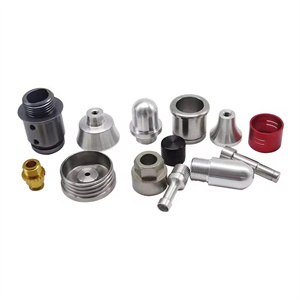The application of CNC Turned Components in the transportation industry is extremely important, as their high precision, high efficiency, and flexibility make them the preferred choice for manufacturing various precision components. The following is a clear summary and breakdown of the application of CNC Turned Components in the transportation industry:
Overview of CNC Turned Components
CNC Turned Components are components processed by a computer numerical control (CNC) lathe. These components play a crucial role in the transportation industry as they require strict size, shape, and surface quality requirements. CNC lathes can automatically execute preset programs to perform precise cutting of metals or other materials, thereby producing components that meet design requirements.
Specific applications of CNC Turned Components
Engine system
Key shaft components, such as crankshafts, camshafts, etc., are the core components of the engine and require extremely high precision and strength. CNC lathes can ensure that the diameter, length, surface roughness and other parameters of these components meet the design requirements, thereby improving the performance and reliability of the engine.
Precision fitting parts: There are many components inside the engine that require precision fitting, such as bearing seats, sealing rings, etc. CNC lathes can process high-precision mating surfaces to ensure optimal clearance between these components, thereby improving the overall efficiency of the engine.
drive system
Gears and racks: Although gears and racks are usually machined through milling or hobbing, some small or special shaped gears are also machined using CNC lathes. CNC lathes can process high-precision gear tooth profiles to meet the requirements of transmission systems.
Clutch and brake components, such as clutch pressure plates, brake drums, etc., play a crucial role in the transmission system. CNC lathes can process precise planes and hole positions to ensure the normal operation of clutches and brakes.
Body and chassis structure
Steering system components, such as steering knuckles, steering arms, etc., are directly related to the vehicle’s handling and safety. CNC lathes can process high-precision steering system components, ensuring flexible and stable vehicle steering.
Suspension system components, such as shock absorber rods, control arms, etc., need to withstand complex mechanical loads, thus requiring extremely high precision and strength. CNC lathes can ensure the machining accuracy and surface quality of these components, and improve the performance of suspension systems.
Interior and exterior decorations
Metal decorative components: Although most parts in the interior and exterior are manufactured using injection molding, vacuum molding, and other processes, some metal decorative components such as door handle bases, decorative rings, etc. are often processed using CNC lathes. These components need to have a beautiful appearance and high surface quality to meet the overall design and aesthetic requirements of the vehicle.
